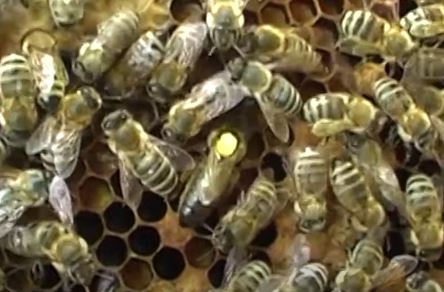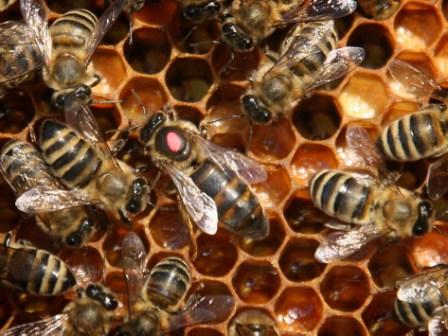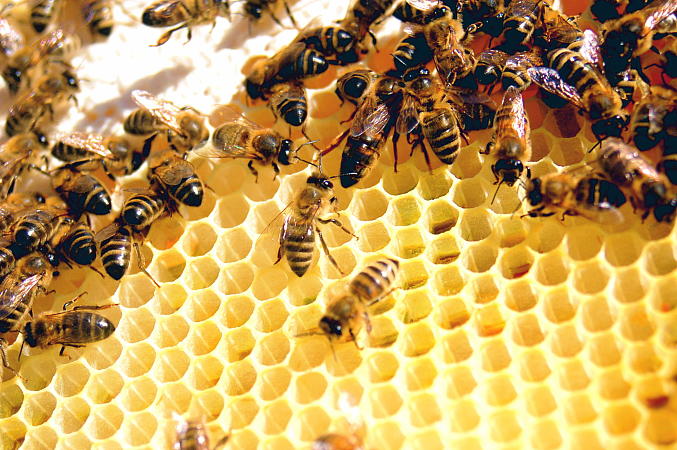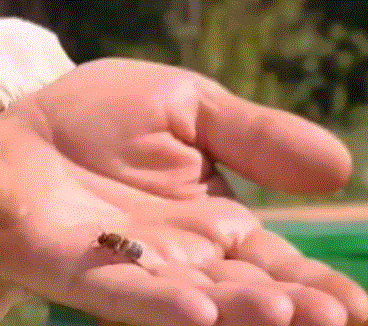The composition of the bee colony and how the bee colony works in the hive

Honey bees live only in large families; the number of individuals and the composition of the bee family changes throughout the year. In this way, honey bees differ from solitary bees, and also in many ways from bumblebees and wasps. In order to effectively care for bees, it is important for a beekeeper to know not only the composition of the bee colony, but also how roles are distributed in the bee colony, how the bee colony works in the hive, and much more. Let's look at everything in order.
Read to the end - it will be interesting!
Content
- How does a bee colony work in a hive?
- Queen in a bee colony
- Worker bees in a bee colony
- Drones in a bee colony
How does a bee colony work in a hive?
It is important to understand the organization of the bee colony, who the bee colony consists of, and how functions are distributed in the bee colony. If the composition of a bee colony is simple: a bee colony includes a queen, worker bees and drones, then the hierarchy of a bee colony is much more complex than it seems. Let's start our consideration with the central figure of the bee family - the queen.
Queen in a bee colony

Photo of the queen in a bee family
The central figure of a bee colony is the queen bee.
In a bee colony, the queen is the largest individual in terms of size and weight. Its body length is on average 25 mm, and its weight is about 300 mg. Body color depends on the breed. The queen has a short proboscis. She does not have baskets for collecting pollen grains and has lost the ability to collect food for herself and her offspring, as do the queens of other social insects, bumblebees and wasps.
There is always only one queen in a bee colony. An exception is the case when there is a “quiet” change of queen in a family and at some period two queens, a mother and a daughter, can live and work as part of a bee family. In the process of evolution, the queen bee in the bee colony has become a highly specialized individual in laying eggs, from which worker bees, drones and queens develop.
Her glands that secrete wax and jelly have also atrophied. The progressiveness of this specialization of the queen of honey bees is confirmed by the fact that already at the beginning of flight she is capable of laying 1500 - 2000 eggs per day, the mass of which exceeds her own. Under favorable weather conditions and good honey flow, the most fertile queens can lay up to 3 thousand eggs per day in the summer, and then the number of bee colonies reaches 80 thousand worker bees.
The queens of bumblebees, for example, can hardly lay such a quantity in their entire life.
To raise queens, bees build large queen cells, bowls, on the edges of the honeycombs, into which the queen lays only fertilized eggs.
Types of queen cells
The queen in a bee colony lives up to 4 - 5 years, but develops the most active egg laying in the first two years of life. Therefore, beekeepers usually change queens in families the next year after their highest egg production, with the exception of those that are of great value and are distinguished not only by high fertility, but also pass on to their offspring good winter hardiness, productivity and other useful traits.
The role of the queen in the bee family is not limited only to the function of reproducing new generations of the hive population. As studies by a number of scientists have shown, the queen plays an equally important role in regulating many physiological and behavioral processes in the bee colony by influencing the bees with the hormones of the uterine substances she secretes. When the queen in a bee colony ages or becomes weak from illness, the secretion of queen matter decreases and, sensing this, worker bees strive to replace her. They rebuild the bowls, encourage the queen to lay eggs in them, and raise new queens. A “quiet” change of uterus occurs in the family. A similar phenomenon occurs before swarming, when the queen reduces egg laying and worker bees actively raise swarming queens. With a lack of uterine substance, worker bees begin to develop ovaries, and they become tinder bees, i.e. capable of laying unfertilized eggs, which can lead to the colonies becoming detached and the beekeeper will have to correct them.
Special experiments have proven that worker bees systematically lick the uterine substances from the queen and then pass them on to other bees with the regurgitated food. The movement of queen substances among the hive population occurs quite quickly and easily suppresses the desire of worker bees to breed a queen. Using the method of radioactive isotopes, it was established that the exchange of food among worker bees occurs actively, especially in the summer. Therefore, the bees very quickly learn about the disappearance of the queen from the hive. One has only to pick up the queen or, in case of careless work, crush her with a frame, and immediately after a few minutes the bees begin to anxiously run around the entrance and the front wall of the hive in search of their queen. A peculiar hum appears in the nest. In a colony that has lost its queen, the bees work poorly to collect nectar and pollen, stop building honeycombs and poorly protect their nest from attacks by thieving bees. Having opened the nest of a family in which there has been no queen for a long time, an experienced beekeeper will immediately determine this by the raised abdomens of the worker bees and their peculiar hum.
A bee colony cannot exist without a queen. When bees have an unfavorable winter, especially due to lack of food, the queen, as a rule, dies among the last dozen bees. Bees do everything possible to preserve their queen and thereby continue the life of the bee colony.
Why is water important for bees?
Heat and honey flow
How to help bees in the heat
Nervous system of a bee
Bee Reproduction
Bee digestive organs
External structure of a bee
Bee vision
Worker bees in a bee colony

Photo Worker bees in a bee family
As part of a bee colony, worker bees are the most numerous; they create the necessary conditions for the life of the bee colony.
How many bees are in a bee colony?
How many bees are in a bee colony? In a bee colony, the number of bees varies greatly depending on the season. In the spring, in a normal bee colony, the mass of bees is 1.5 - 2.0 kg, in the summer - up to 6 - 7 kg, and only 2 - 2.5 kg remains for the winter. The greater the number of worker bees in a family, the better the living conditions for the family and the higher its productivity.
The life cycle of worker bees - from egg to bee.
In the composition of a bee colony, worker bees are the most important component, however, in the composition of a bee colony, all three components are important and form a single whole.
Worker bees in a bee colony perform all the basic functions. They care for the brood of the bee family, participate in honey collection, build honeycombs, guard the nest and perform other work:
- receive and process nectar brought to the hive,
- crush with their jaws and compact the heads in the cells of pollen pollen collected by bees,
- keep the hive clean.
- collect pollen from flowers,
- bring water to the hive
- bring propolis to the hive.
In a bee colony, the functions of worker bees are determined not only by their age and physiological state. Each worker bee is very responsive to those needs that are most significant at the moment, and roles in the bee colony can change under the influence of external factors.
For example, if a good honey flow appears in nature, then the instinct to collect nectar becomes decisive during this period. Roles in the bee colony change and the maximum possible number of flying bees available in the family are mobilized to collect nectar. If in early spring a bee colony experiences protein starvation, then all the bees flying out of the hive bring pollen. This continues until the necessary reserves of beebread are created in the hive. In a bee colony, functions can change and therefore a bee of the same age, if necessary, can perform work both in feeding the brood and in building combs or collecting nectar and pollen. The ability of adult worker bees to perform those jobs for which the greatest need is felt at a given moment or in a given place in the nest allows the bee colony to ensure normal life activities by operating a very complex mechanism with such simple means.
Seemingly ideal harmony in a bee family is achieved only by the size of the bee family - thanks to the presence in the hive of a large number of reserve worker bees that are not loaded with specific work. They try to do exactly the work for which there is an urgent need, and thereby not disrupt the normal functioning of the bee colony as a whole. The innate instinct inherent in every bee to respond to all stimuli in the family and to take an active part in creating normal conditions for its life activity is the essence of the social life of this community of thousands of insects.
Drones in a bee colony
Photo Drone
The composition of a bee colony would not be complete without drones.
Who are drones? Drones are the male members of a bee colony; drones live in a bee colony only in the summer. Drones in a bee colony are raised from the beginning of May until the end of the honey harvest. Therefore, in order to obtain early fertile queen bees, it is necessary to make efforts to obtain early drones.
Beekeepers often grow drone brood to produce drone homogenate and for biological control of Varroa mites using building frames.
